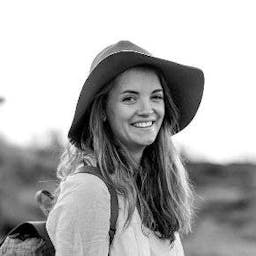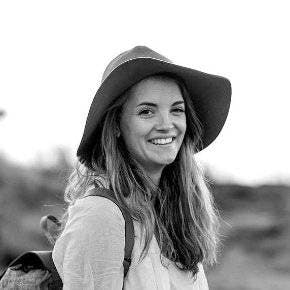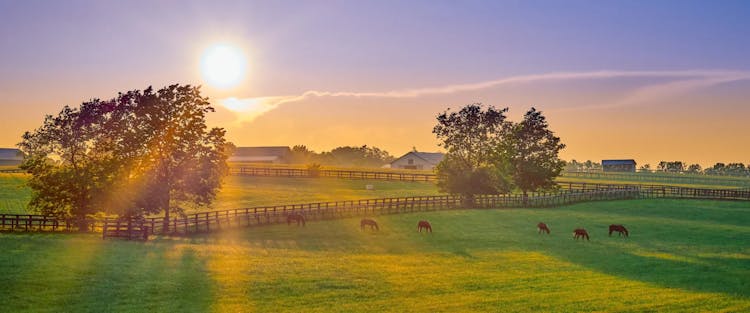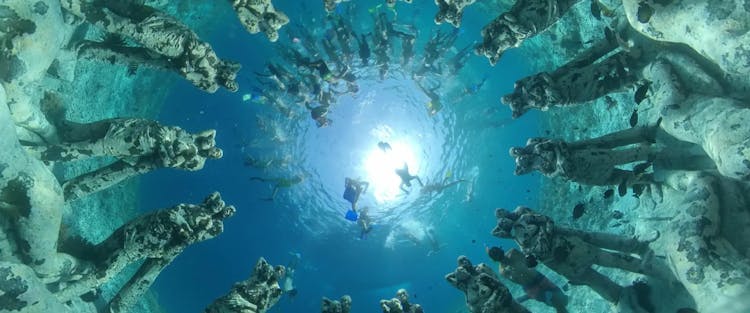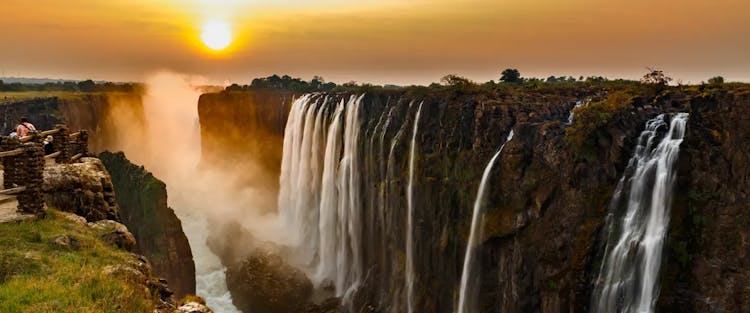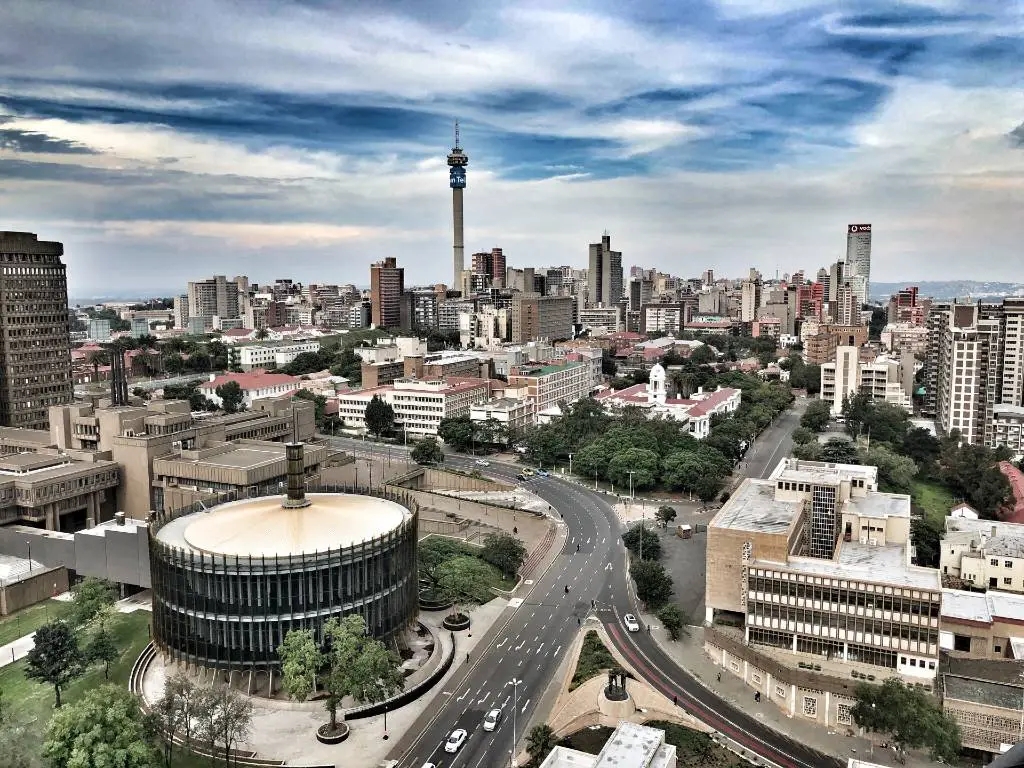
Johannesburg: The South African Metropolis Known As the City of Gold
The City of Gold
Unlike most cities built around a stable water source, Johannesburg was shaped by a gold rush in the late-19th century. Thanks to this slip of shiny stuff, wishful wealth-seekers flocked from afar for the potential riches and Johannesburg was established in 1886.
Today, it’s the largest city in South Africa and home to more than 5 million people from around the world, and Jo'burg is all the richer for its vibrant migrant population through the ages. Almost as an ode to its diversity, this capital (South Africa has three) goes by many endearments: Jozi, Jo'burg, Joeys, and eGoli, which means "the city of gold" in isiZulu, one of South Africa's 11 official languages. There is even an unofficial 12th language that was born here. Fanakalo (also spelled Fanagalo) was born underground to bridge the cultures that came together to work on the mines. Yes, these soils hold stories.
A cultured cuisine
Mining required lots of labor, and workers came to Johannesburg from around the world. For example, Johannesburg's Chinese community is nearly as old as the city itself; within seven years of the Jo'burg’s founding, the city had its first Chinatown. Then there are places like Fordsburg, a neighborhood that has been home to Muslim, Asian, Middle Eastern, and African residents (who, for years, fought against it becoming a whites-only area) since the city's inception.
One of many ways this rich mix of cultures is evident is in the form of sensational street cuisine. There are delicate dol puri bites, sweetmeats and samosas, mango lassi, and spicy tandoori chicken sold straight off the braai, which is the South African slang for barbecue. (South Africans so love their braais that a public holiday has been appropriated for grilling). And in Little Addis, or the Ethiopian Quarter, you'll find coffee ceremonies, signs posted in Amharic, and authentic injera.
Dubbed Africa's New York, Johannesburg continues to draw dreamers from across the continent and these crossing customs gave birth to new dishes, too, such as the common kota. Derived from the word "quarter," it's Jozi's answer to Durban's bunny chow. The easy-to-eat on-the-go sandwich consists of a quarter-loaf of bread, which is hollowed out and stuffed with any kind of filling. Most often that's french fries, processed meats, and a spicy salsa called chakalaka.
Like every good capital city, Jo'burg also has its globally relevant but homegrown craft offerings. In SA, they like to say, "Local is lekker!" which roughly translates to say that local goods are great. Hands-on foodies can create their own African-inspired Belgian chocolates in a workshop at Chocoloza or distill a bottle of fynbos (a local plant) gin at the Gin School.
The urban forest

Johannesburg is home to some of the world's deepest gold mines (more than 2 miles) and timber became a highly sought-after resource to build the structures for all the newly required shaft mining equipment. Over the century or so since the city's inception, natural grasslands have been transformed into woodland. Experts estimate that around 6 million trees have been planted across Johannesburg, making it one of the most wooded cities in the world. This history is most evident in some of the suburb names, such as Parkhurst, Parkwood, and most descriptively, Forest Town.
Although the natural grasslands have scaled back, there is still a variety of urban wildlife. In some suburbs, you can hear black-backed jackals cry at night or spot a woodland kingfisher along the Jukskei River. The best-preserved grasslands lie on the outskirts of the city in the Cradle of Humankind, or visit the Walter Sisulu National Botanical Garden to hike the natural landscape as it looked a century ago.
However, jacaranda trees have to be the most iconic with their purple blooms that color the streets in spring (generally late-September to mid-November). The trees are not native to South Africa. They were imported from Brazil and first planted shortly after the city’s founding. Today, there are tens of thousands of trees all over the city. The Four Seasons Hotel The Westcliff, Johannesburg, even mixes a special purple gin cocktail for the seasonal bloom.
A must-see museum
No visit to Jo’burg is complete without a sobering visit to the Apartheid Museum (currently closed due to Covid). This nonprofit repository offers deep and considered insight into South Africa's past and how it impacted the present and future of the country. It's a vital history lesson that starts with a jarring exercise. To get in, you must queue according to skin color, just as many inhabitants of the city did for years.
From 1948 until 1994, South Africans lived under a racist system of laws called apartheid (“apartness” in the language of Afrikaans). Under apartheid, nonwhite South Africans (which encompassed Black, Asian, and mixed race people—a vast majority of the population) were forced to live in separate areas from whites and use separate public facilities. Every person of color had to abide by curfew laws and carry a passbook when navigating the city. Other repressive measures included making protest illegal. Johannesburg bore witness to many famous events of resistance to these vile segregationist laws. The most famous of these is the tragic Soweto Uprising, where even children paid the price for demonstrating with their lives.
It was only when the African National Congress was unbanned as a political party in 1990 that democratic South Africa saw a new dawn.
Urban legends

This contradictory city lays bare both the sins and successes of South Africa, and no place better epitomizes this than Vilakazi Street in Soweto. Now a part of the city, Soweto was originally the South Western Townships (SOWETO), a collection of settlements where nonwhite people, predominantly Black people, had been forcibly relocated over the preceding decades.
Vilakazi Street is named after Dr. BW Vilakazi, an intellectual, poet, and novelist recognized as the first Black man to teach white South Africans at Jo'burg's University of the Witwatersrand. This is also the only street in the world to produce two Nobel Prize winners—Nelson Rolihlahla Mandela and Desmond Tutu.
Mandela's former home at 8115 Vilakazi Street is now a marvelous museum where you can follow the tumultuous timeline of Tata's journey from the Eastern Cape to Robben Island to Pretoria as president. After becoming president, Mandela moved to Houghton in the suburbs, where his former home has just been opened as an elegant boutique hotel called Sanctuary Mandela.
The Jerusalema Challenge
One song sparked a worldwide dance challenge during the global 2020 lockdown, and it was born in Johannesburg. Mixed by Master KG with vocals from Nomcebo, the Jerusalema video has hit over 400 million views on YouTube.
While the song was mixed in a South African studio, the dance has been traced back to one casual lunchtime video in Angola. Get a crew, learn the moves, and film your grooves to join the #JerusalemaDanceChallenge. This playlist that looks at Johannesburg artists through the ages complements Jerusalema nicely.
Mining and mansions
The grand Rand Club was once the center of Johannesburg's formidable mining world. This members-only association was founded in 1887 and frequented by wealthy white European colonizers, mining magnates called the Randlords. These men controlled the gold and diamond mining industries in South Africa from the 1870s up until World War I.
Now home to a modest hotel, affordable eatery, plus a curiosities shop of maps and antiquities, the club has moved on from its antiquated racist and sexist membership policies. Women and Black members were admitted in the 1990s.
Here you can feel the city's pulse and grapple with the complicated past, present, and future of eGoli. Look carefully, and you might also find a memento from 1994: an original ballot from South Africa's first democratic elections.
Outside art

Jo'burg has a thriving street art scene with mosaic pieces by Hannelie Coetzee, towering murals from Faith 47 and leading Johannesburg artist Dbongz, and outdoor sculptures by more traditional greats such as William Kentridge.
Dubbed an African graffiti capital, this art emerged from decay. There was a mass exodus from the city center during the 1980s and 1990s as businesses left for a shinier suburb named Sandton. As buildings lost value and became abandoned, they were converted into canvases. Scrubbing away the ‘vandalism’ was not a priority given all the nation-building that comes with fresh democracy, and so the street art stayed, ripening into a drawcard. Some graffiti is still deemed illegal, but many of these artworks were commissioned by the city to bring people back.
The newly revamped Jewel City in the Maboneng Precinct is another colorful stop for enormous artworks. Intrigued? Join a Jozi Virtual Artwalk wherever you are in the world.
Material world
Johannesburg is an ideal place to shop for fabrics from all over the continent. The Fashion District is a long-standing fashion and haberdashery district with strong Jewish ties. A significant portion of Jo’burg's Jewish community can trace their roots back to the early gold rush years when a stream of persecuted Eastern European Jews (many from Lithuania) moved in search of a new life.
Today, this special corner in the east of the inner city is home to a seam of material markets. There's Kente cloth from Ghana, Maasai tartan, woolly Basotho blankets, and of course, South African shweshwe, a printed cotton fabric used in traditional dress.
Shweshwe has a fascinating history, with colonial roots in Germany before being adapted locally. It’s graced international fashion runways and brides wear alike. The fabric is typically worn by women, fashioned into demure over-the-knee skirts and twisted into stately head wraps for ceremonial occasions. The iconic color for the fabric is blue, but brown and red renditions exist too.
The Cradle of Humankind

While Johannesburg may be one of the youngest cities in the world, just a 45-minutes drive away sits an ancient stockpile. The Cradle of Humankind is one of the richest archaeological sites globally and some say it is home to an estimated 40% of Earth's human fossils. There are two ways to explore this underground realm: The Maropeng Visitor Centre is a fabulous interactive museum that looks at the journey of humanity while the Sterkfontein Caves tour takes you to the excavation site of the first crucial humanoid fossil, an approximately 2.1-million-year-old Australopithecus skull affectionately named Mrs. Ples.
If you don’t have time for the day trip, the University of the Witwatersrand has an excellent Origins Centre museum which ties the story of evolution to San culture and traces the rich hunter-gatherer traditions of South Africa’s first Indigenous people.
The Cradle (as locals like to call it) is where our common human ancestors hung out, making it an apt place to celebrate being alive! After all, we made it past all those saber-toothed cats and sinkholes, unlike Naledi, Little Foot, Mrs. Ples, and Lucy. Use those legs for countryside rides in the wide dedicated cycle lanes, sail towards the Magaliesberg mountains in a hot air balloon, or simply lie in the sun on the sprawling lawns of the NIROX Sculpture Park.
Set in the city
Then there are the prawns. No, not the shrimps you can eat, but the freaky alien ones from the 2009 movie District Nine. They were inspired by a King Cricket that Jo'burgers like to call a Parktown prawn. While the film is a science-fiction fantasy, the narrative aligns closely with South Africa's true segregationist history.
The feel-good Invictus, starring Matt Damon and Morgan Freeman, was also set in Johannesburg but is a far more optimistic story. The Springboks entered the 1995 Rugby World Cup at Ellis Park Stadium. Would a win unite the newly democratic country?
See Going's deals on flights to Johannesburg, and join today to get cheap flights delivered right to your inbox.
More destinations in Africa:
Published October 26, 2023
Last updated December 19, 2023
Articles you might like
View AllTreat your travel to cheap flights
Most deals are 40-90% off normal prices with great itineraries from the best airlines. If it's not an amazing deal, we won't send it. Sign up for free to start getting flight alerts.
